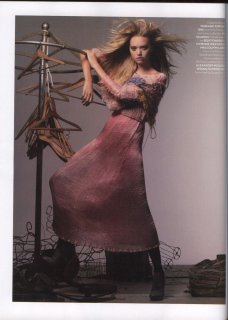Fortuny Delphos tea gown, c.1920-1930
Lady Bonham-Carter:
Everyone went to Fortuny then. I think everyone I knew had a Fortuny dress.
Mariano Fortuny first created his signature Delphos gown in 1907, repeating the design with subtle changes until his death in 1949. The sleeveless version appeared in the 1920s. The gown is based on the pleated linen
chitons worn by Greek maidens 2500 years ago and seen today on Delphic Greek sculpture. The Fortuny Delphos gown has preserved the poetry of line of the Greek robe.
Fortuny used a thin silk satin more finely pleated than anything ever seen in costume. His famous hand-pleating method has never been successfully duplicated. The resulting garment is incredibly soft and liquid, molding to the curves of the body. The gold stenciled belt picks up the color of the Venetian beads.
The feather-weight dress is weighted on the shoulders and sides with strings of striated Venetian glass beads. It comes with a hand-stenciled belt, which is signed "Fortuny DSE". The dress is marked "Fortuny Déposé/Made in Italy" on the center back seam. To keep the pleats in place, the dress should be stored twisted like a skein of yarn.
From the early 1920s, Fortuny's timeless clothing has been treasured by the cultured elite. The novelist Marcel Proust described Fortuny as "faithfully antique but powerfully original." In the section of
Remembrance of Things Past entitled
The Captive, Fortuny constitutes an entire
leitmotiv. He is the only character in all of Proust's work who retains a real-life identity, a testimony to Fortuny's cultural importance.
Proust wrote: "Of all the indoor and outdoor gowns that Mme de Guermantes wore, those which seemed most to respond to a definite intention, to be endowed with a special significance, were the garments made by Fortuny...Is it their historical character or the fact that each one is unique that gives them so special a significance that the pose of the woman wearing one while she waits for you to appear assumes an exceptional importance?"
Actresses and top models like Julie Christie, Lauren Hutton, Geraldine Chaplin, and Tina Chow have been devoted to Mariano Fortuny y Madrazo. The original Fortuny Delphos gown can rarely be found today outside of major collections. The reason is obvious. Not only is the Delphos an extraordinarily beautiful collectible of proven value, but it represents the ultimate in high-style glamour for the woman who has the figure and status to wear one.
Fortuny designs have endured as timeless works of art. His creations transcend the rigid dictates of fashion. A Fortuny design, an unconditional statement of beauty, nevertheless adapts itself to the wearer and the occasion. Although known today primarily as a clothing and textile designer, Fortuny was also a painter, etcher, sculptor, photographer, lighting engineer, set designer, theatre director, inventor and architect.
In the field of design, he personified the Renaissance man who could do it all. As a young man, he stated, "Art is my life's aim." His work is a living testament to that ideal. He rightly occupies a place of honor in the pantheon of great design.
The condition is excellent.
The length is 57" from the shoulder to the hem. The Delphos is shown on a mannequin with a 35" bust and 36" hip. The pleats expand to fit a variety of sizes.
vintagetextile.com
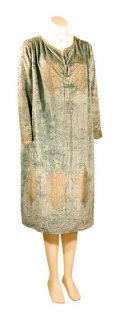
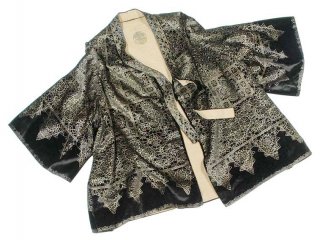
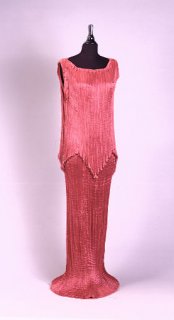
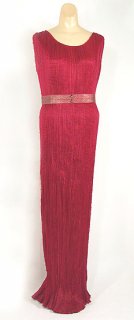
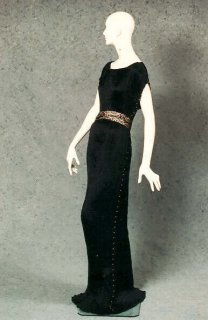
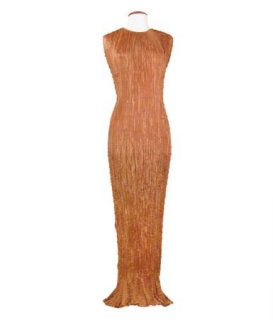
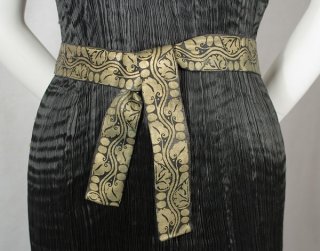
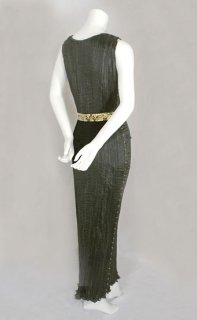
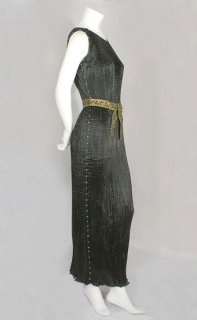
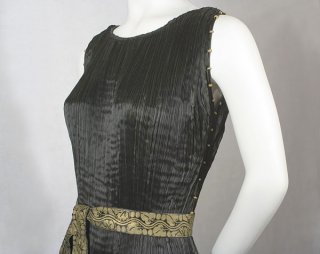
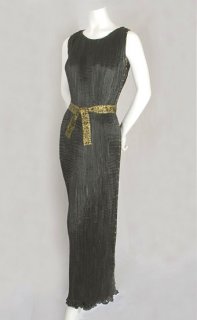
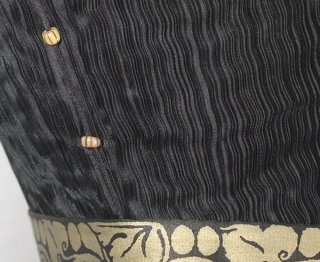
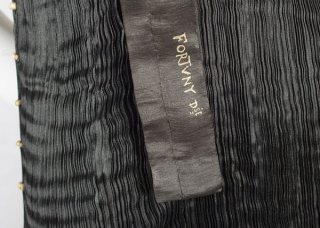
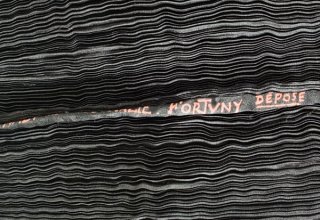
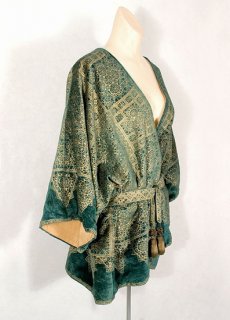
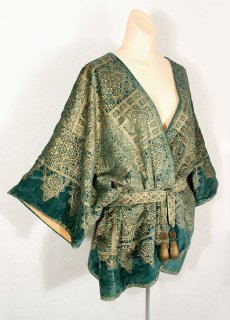
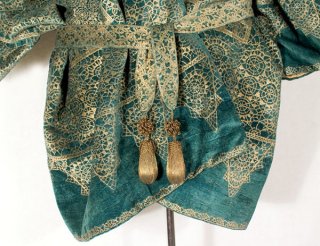
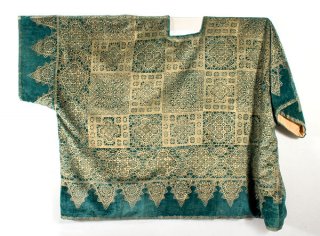
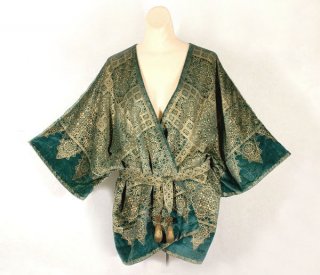
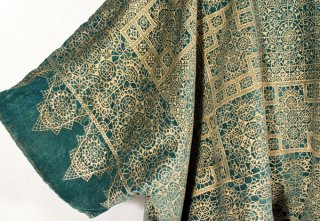
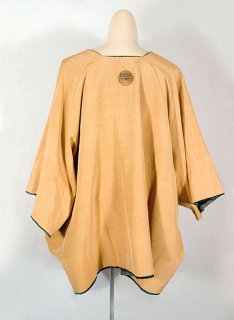
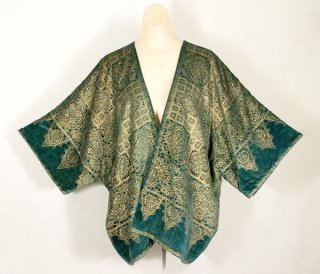
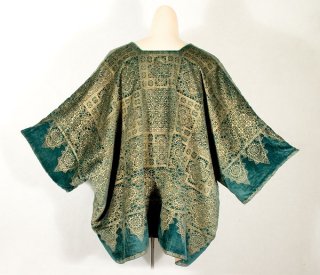
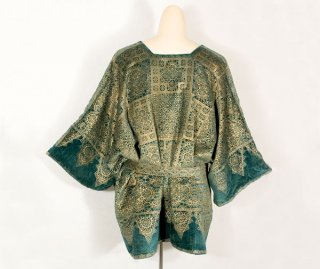
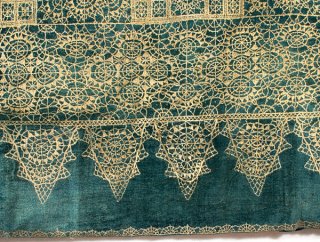
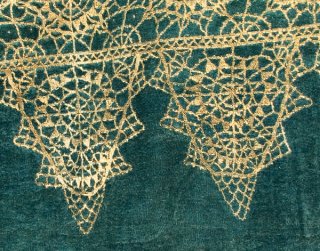
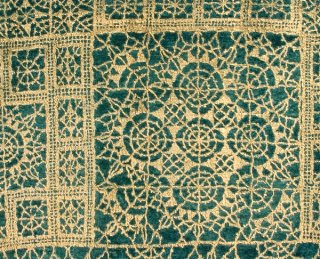
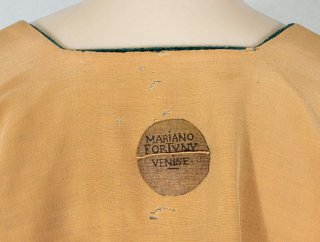
 Thank you for these.
Thank you for these.
